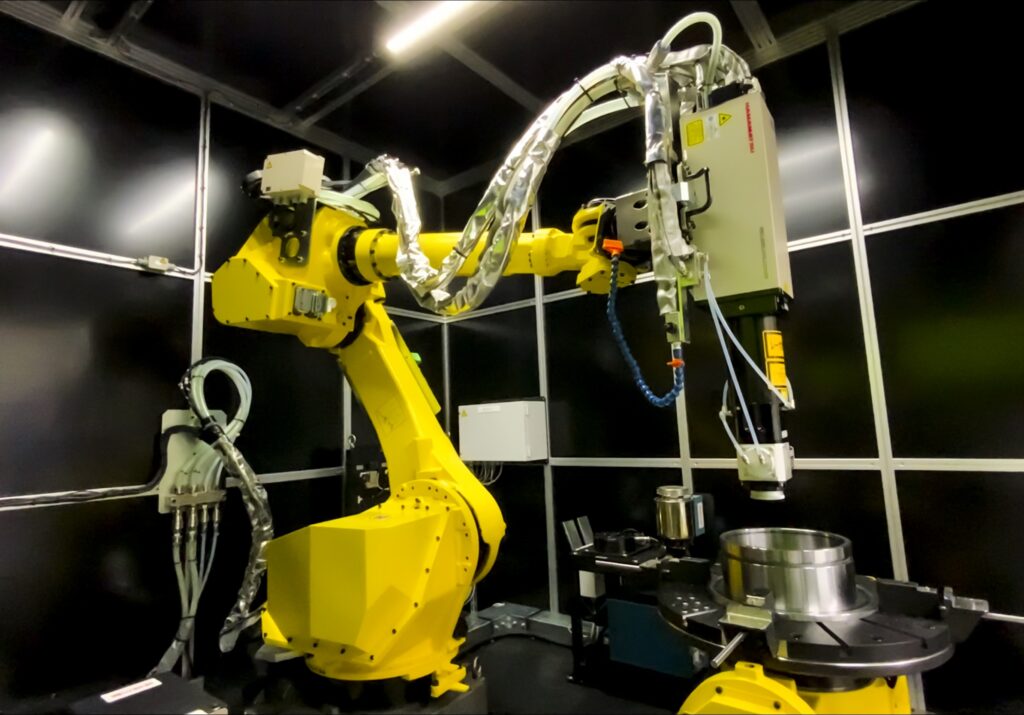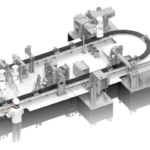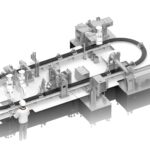ASIA ELECTRONICS INDUSTRYYOUR WINDOW TO SMART MANUFACTURING
Blue Laser Poises as Next-Generation Laser Processing Technology
Demand for laser processing machines for application in various manufacturing processes has been increasing. Among these processes include semiconductors, liquid crystal panels, electric vehicles (EVs), and medical equipment. Also, as material processing continues to diversify, market needs for laser processing machines have expanded. Specifically, interests in blue laser processing machines, which are considered next-generation machines, has also been increasing.
Amid the progress of new trends, like fifth-generation mobile communications (5G), EVs, digital transformation and carbon neutrality, manufacturers of factory automation (FA) equipment and machine tools have commercialized laser processing machines that enable fine processing. In fact, these machines have begun to be installed in manufacturing floors on full scale.
Basic Principle of Laser Processing
In the basic principle of laser processing, laser light emitted from an oscillator is collected by a mirror (or a lens) to increase energy density. The energy is then irradiated to works, such as metals, for heat processing.
Thus far, various methods of laser processing machines, such as fiber laser, YAG laser, and CO2 laser machines, have been commercialized. Now, expectations for next-generation laser processing have been increasing amid requirements for high-quality and fine processing. Among them include micro processing of components for information and communications equipment and components for medical equipment. Moreso, needs for hard-to-work materials, such as carbon fiber-reinforced plastics are also increasing.
High Interests in Blue Laser
The New Energy and Industrial Technology Development Organization (NEDO) worked on the Development of Advanced Laser Processing with Intelligence Based on High-Brightness and High-Efficiency Next-Generation Laser Technologies (TACMI Project) from FY2016 to FY2021. Thirteen organizations, including the National Institute of Advanced Industrial Science and Technology (AIST), The University of Tokyo, Mitsubishi Electric Corporation, and Panasonic Corporation, took part in the project. They developed Kashiwa II Platform, verification facilities, which integrate cutting-edge laser light sources, processing machines, and technologies.

The Kashiwa II Platform opened at the clean room of The University of Tokyo in AIST Kashiwa in Japan’s Chiba Prefecture. It started operations in 2021. Users of processing technologies can conduct processing tests of next-generation laser technologies, such as high-brightness laser processing machines with short wavelengths and high-output, high-brightness blue semiconductor lasers. They can also use databases.

Among next-generation laser processing technologies, interest in blue lasers is high.
The main wavelengths of laser light used for conventional laser processing methods have been in the near infrared region. Among them include CO2 laser with 10,600nm wavelength, and YAG laser and fiber laser with 1,064nm. Blue lasers use wavelengths of 360 to 480nm in the ultraviolet region.
Automobiles have been going electric at a fast pace. In EVs, greater amount of copper with high conductivity is used in electric motors and batteries. However, conventional lasers with long wavelengths exhibit low absorption rates on copper. They are difficult to process. Meanwhile, lasers with shorter wavelengths exhibit higher energy densities. Hence, blue lasers can obtain higher energy compared with conventional lasers.
Aggressive Development of Blue Lasers
Panasonic Connect Co., Ltd. has produced a prototype laser oscillator, which incorporates a blue direct diode laser (blue DDL). In Dec. 2021, the company opened the Advanced Material Processing Connect Lab (AMP Connect Lab), a process demonstration center for blue laser processing machines, at the company’s plant in Toyonaka, Osaka Prefecture. The present laser oscillator has output of 400W class. The company is advancing the development of high-output oscillators with 800W or higher, accelerating the development of blue laser processing machines.
Since January, Furukawa Electric Co., Ltd. has been selling BRACE X hybrid laser oscillator. It combines a blue laser with output of 1kW (300μm core diameter) and a near infrared fiber laser with output of 3kW (50μm core diameter).
Meanwhile, NITTOKU Co., Ltd. has developed a laser welding machine for motors of electrified vehicles (xEVs) jointly with Furukawa Electric. In the wire splicing method for copper coils of EV motors, it replaces the conventional tungsten inert gas (TIG) welding, a type of arc welding using electricity. It is based on Furukawa Electric’s hybrid laser. The practical use of blue lasers in the EV field has been advancing.





